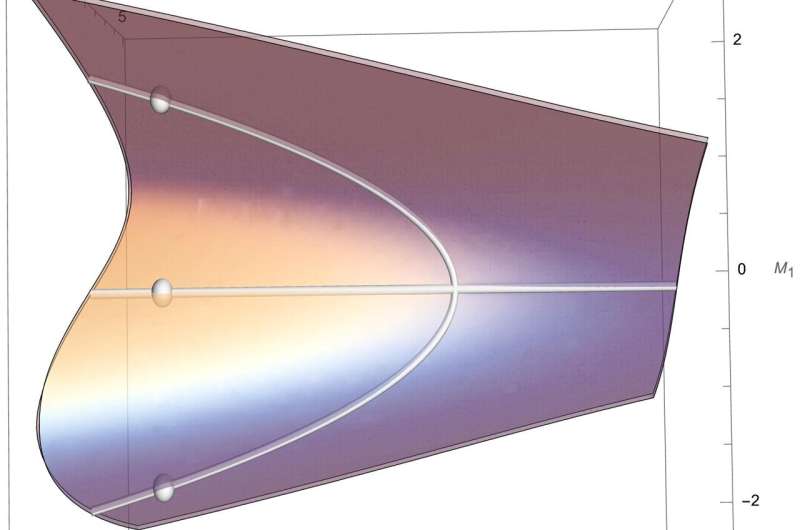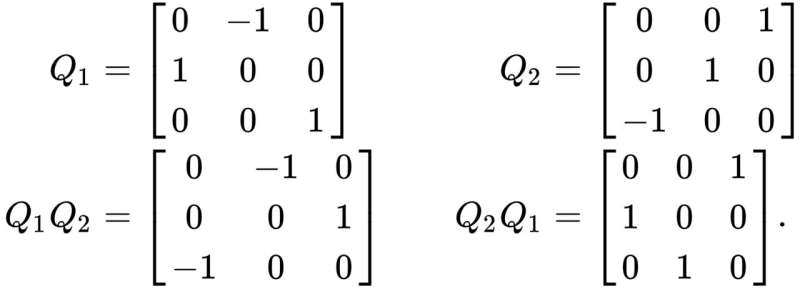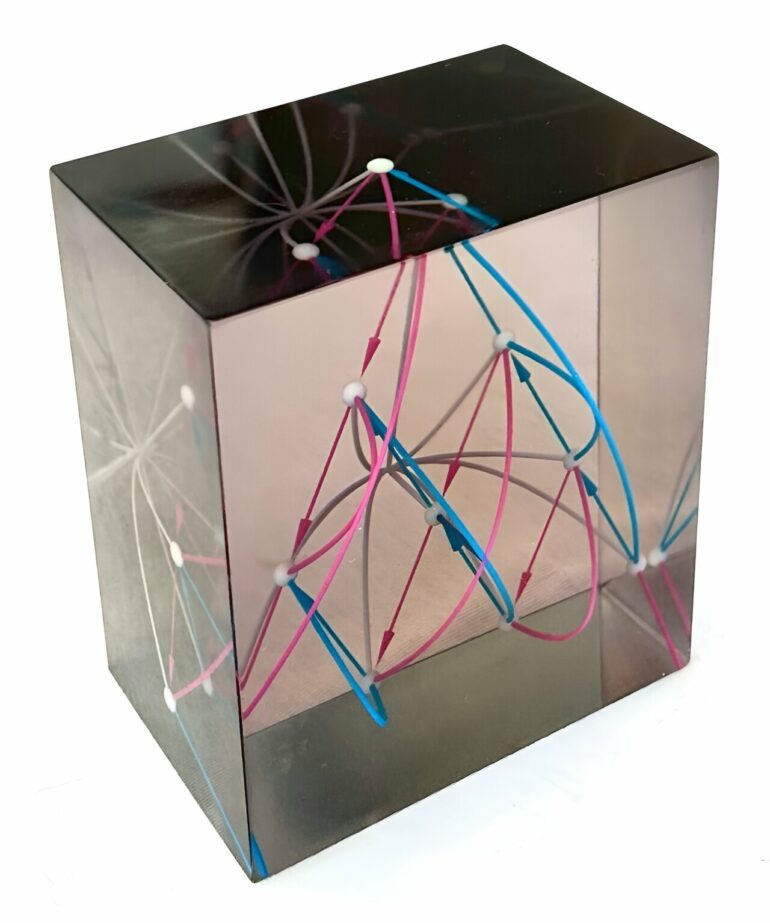Several fields of mathematics have developed in total isolation, using their own “undecipherable” coded languages. In a new study published in Proceedings of the National Academy of Sciences, Tamás Hausel, professor of mathematics at the Institute of Science and Technology Austria (ISTA), presents “big algebras,” a two-way mathematical ‘dictionary’ between symmetry, algebra, and geometry, that could strengthen the connection between the distant worlds of quantum physics and number theory.
Mathematics, the most exact among scientific disciplines, could be viewed as the ultimate quest for absolute truth. However, the mathematical roads to truth often need to overcome tremendous obstacles, much like conquering unimaginably high mountain peaks or building giant bridges between isolated continents.
The mathematical world abounds with mysteries and several mathematical disciplines have developed along convoluted paths—in complete isolation from one another. Thus, establishing an irrefutable truth around complex phenomena in the physical world draws on intuition and a good deal of abstraction.
Even fundamental aspects of physics push mathematics to new heights of complexity. This is especially true for symmetries, with the help of which physicists have theorized and discovered an entire zoo of subatomic particles that make up our universe.
In an exceptionally ambitious endeavor, Hausel, professor at the Institute of Science and Technology Austria (ISTA), not only conjectured but also proved a new mathematical tool called “big algebras.”
This new theorem is comparable to a “dictionary” that deciphers the most abstract aspects of mathematical symmetry using algebraic geometry. By operating at the intersection of symmetry, abstract algebra, and geometry, big algebras use more tangible geometric information to recapitulate sophisticated mathematical information about symmetries.
“With big algebras, information from the ‘tip of the mathematical iceberg‘ can give us unprecedented insights into the hidden depths of the mysterious world of symmetry groups,” says Hausel.
With this mathematical breakthrough, Hausel seeks to consolidate the connection between two distant fields of mathematics.
“Imagine, on the one hand, a world of mathematical representations of quantum physics, and on the other hand, very, very far away, the purely mathematical world of number theory. With the present work, I hope to have come one step closer to establishing a stable connection between these two worlds.”
No longer lost in translation
The 17th-century philosopher and mathematician René Descartes showed us that we could understand the geometry of objects by using algebraic equations. Thus, he was the first to “translate” mathematical information between these previously separate fields.
“I like to view the relations between different mathematical fields as dictionaries that translate information between often non-mutually intelligible mathematical languages,” says Hausel.
So far, several such mathematical “dictionaries” have been developed, but some only translate the information in one direction, leaving the information about the way back entirely encrypted. Furthermore, the term “algebra” nowadays encompasses both classical algebra, as in Descartes’ time, and abstract algebra, i.e. the study of mathematical structures that cannot necessarily be expressed with numerical values. This adds another layer of complexity. Now, Hausel uses abstract algebra and algebraic geometry as a two-way “dictionary.”

The trident is the skeleton of the triplet big algebra’s surface, drawn with algebraic geometry techniques. © Bedats/Hausel
A skeleton and nerves
In mathematics, symmetry is defined as a form of “invariance.” The group of transformations that keep a mathematical object unchanged is called a “symmetry group.” These are classified as “continuous” (e.g., the rotation of a circle or sphere) or “discrete” (e.g., the mirroring of an object). Continuous symmetry groups are represented mathematically by matrices—rectangular arrays of numbers.
Starting from a matrix representation of a continuous symmetry group, Hausel can compute the big algebra and represent its essential properties geometrically by drawing its “skeleton” and “nerves” on a mathematical surface.
The big algebra’s skeleton and nerves give rise to interesting, 3D-printable shapes that recapitulate sophisticated aspects of the original mathematical information, thus closing the translation circle.
“I am particularly excited about this work, as it provides us with a completely novel approach to studying representations of continuous symmetry groups. With big algebras, the mathematical ‘translation’ does not only work in one direction but in both.”

When the order of the operations influences the end result, the matrices are called “non-commutative.” In this case, the product Q1 x Q2 differs from the product Q2 x Q1. © Wikipedia
Bridging isolated continents in a vast world of mathematics
How could big algebras strengthen the link between quantum physics and number theory, two fields of mathematics seemingly worlds apart? Firstly, the math behind quantum physics makes extensive use of matrices—rectangular arrays of numbers.
However, these matrices are typically “non-commutative,” meaning that multiplying the first matrix by the second does not yield the same result as multiplying the second one by the first. This poses a problem in algebra and algebraic geometry as non-commutative algebra is not yet well understood.
Big algebras now solve this problem: when computed, a big algebra is a commutative “mathematical translation” of a non-commutative matrix algebra. Thus, the information initially enclosed within non-commutative matrices can be decoded and represented geometrically to reveal their hidden properties.
Secondly, Hausel shows that big algebras not only reveal relationships between related symmetry groups, but also when their so-called “Langlands duals” are related. These duals are a central concept in the purely mathematical world of number theory. In the Langlands Program, a highly intricate, large-scale dictionary that seeks to bridge isolated mathematical “continents,” the Langlands duality is a concept or tool that allows ‘mapping’ mathematical information between different categories.
“In my work, big algebras seem to relate different symmetry groups precisely when their Langlands duals are related, a quite surprising outcome with possible applications in number theory,” says Hausel.
“Ideally, big algebras would allow me to relate the Langlands duality in number theory with quantum physics,” says Hausel.
For now, he was able to demonstrate that big algebras solve problems on both of these continents. The fog has started to dissipate, and the continents of quantum physics and number theory have caught a glimpse of each others’ mountains and shores on the horizon. Soon, rather than only connecting the continents by boat, a bridge of big algebras might allow an easier crossing of the mathematical strait separating them.
More information:
Tamás Hausel, Commutative avatars of representations of semisimple Lie groups, Proceedings of the National Academy of Sciences (2024). DOI: 10.1073/pnas.2319341121
Provided by
Institute of Science and Technology Austria
Citation:
Two-way mathematical ‘dictionary’ could connect quantum physics with number theory (2024, September 12)



